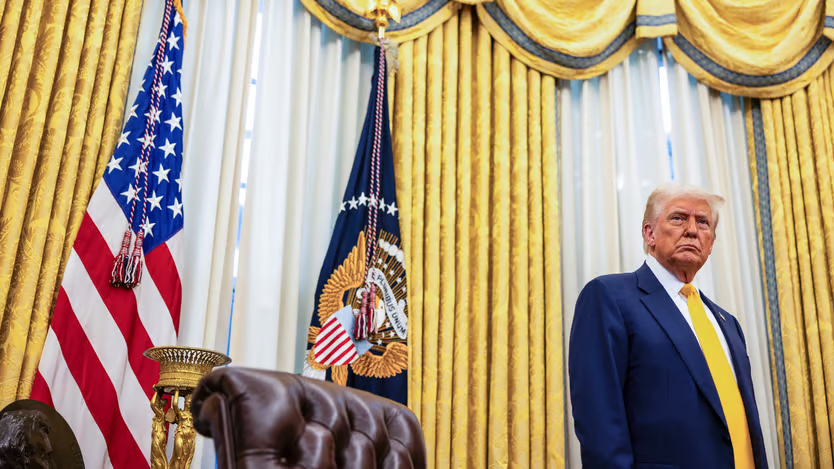
EVEN HIS most ardent detractors would grant that Donald Trump is a masterful marketer. So it goes for the barrage of tariffs that he is set to unveil on April 2nd. The president has promised they will mark “Liberation Day” for America—a turning point when the country starts to claw back the respect and money that, he thinks, it has lost over the decades.
Donald Trump’s proposed “Liberation Day” policy is raising alarms among economists and industry leaders, who foresee significant disruptions to America’s economy. The initiative, which aims to dismantle certain regulations and overhaul trade agreements, is being framed as a bold move to free businesses from government constraints. However, critics argue that the potential ripple effects could lead to job losses, supply chain chaos, and increased costs for consumers.
The policy, set to take effect in the coming months, targets industries ranging from manufacturing to agriculture, with plans to remove longstanding protections and subsidies. While proponents of the plan believe it will foster innovation and competition, skeptics warn that it could destabilize key sectors and leave vulnerable communities at risk. Many worry that the sweeping changes could erode international trade relationships, leading to retaliatory measures from global partners.
Experts are also cautious about the timing of the initiative, given ongoing inflation concerns and market volatility. As businesses brace for the impact, some are already lobbying for exemptions or amendments to the policy, highlighting the far-reaching consequences it could have on employment and economic growth. Whether “Liberation Day” will deliver the promised economic revival or plunge the nation into uncertainty remains a contentious debate.
It sounds like you’re referring to a hypothetical scenario where a policy or event tied to former President Donald Trump, termed “Liberation Day,” could negatively impact the U.S. economy. While there isn’t a widely recognized event by that name associated with Trump, we can analyze potential economic risks based on his past policies and rhetoric.
Possible Interpretations & Economic Concerns:
- Trade Wars & Tariffs – Trump has advocated for aggressive trade policies, including steep tariffs on imports (e.g., China, EU). A sudden escalation could disrupt supply chains, raise consumer prices, and trigger retaliatory measures, hurting U.S. exports.
- Mass Deportations & Labor Market Shock – If “Liberation Day” refers to a crackdown on immigration, mass deportations could strain industries reliant on migrant labor (agriculture, construction, hospitality), leading to labor shortages and higher wages (inflationary pressure).
- Tax Cuts & Fiscal Policy – If tied to sweeping tax cuts (similar to the 2017 TCJA), short-term growth could be offset by higher deficits, risking long-term inflation or austerity pressures.
- Deregulation & Market Volatility – Rapid deregulation (e.g., environmental, financial rules) might boost certain sectors but could also increase systemic risks (e.g., banking instability, climate-related economic damage).
Potential Economic Fallout:
- Market Uncertainty: Investors may react negatively to abrupt policy shifts, leading to stock market volatility.
- Inflation Risks: Tariffs, labor shortages, or fiscal stimulus could exacerbate inflation, complicating the Fed’s efforts to stabilize prices.
- Global Backlash: Retaliatory trade actions or geopolitical tensions could weaken the dollar’s standing or disrupt global supply chains further.
Counterarguments (Pro-Trump Perspective):
- Some argue that protectionist policies could revive U.S. manufacturing or force better trade deals.
- Deregulation might spur business investment in the short term.






